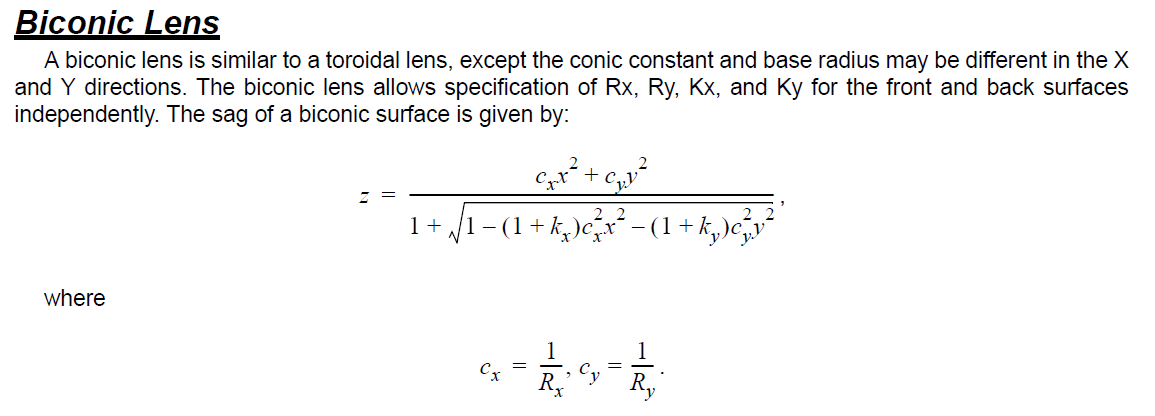I’m trying to model an anamorphic lens in non-sequential mode. The lens is planar on the incident side, and aspherical on the output side, with different asphere equations for x and y coordinates.
The ‘Aspheric Surface 2’ seems to offer what I need in terms of the ability to specify different conic coefficients for x and y, but I cannot figure out how to create a volume from this. The format used in sequential mode, where the surface is preceded by a standard surface where the material is specified doesn’t work.
Presumably the solution will be the same for any of the surface geometries offered in NSC mode, but all the examples and knowledgebase articles I can find apply mirror coatings to these surfaces, so they are modelled as infinitely thin shells.
Any help would be greatly appreciated.




